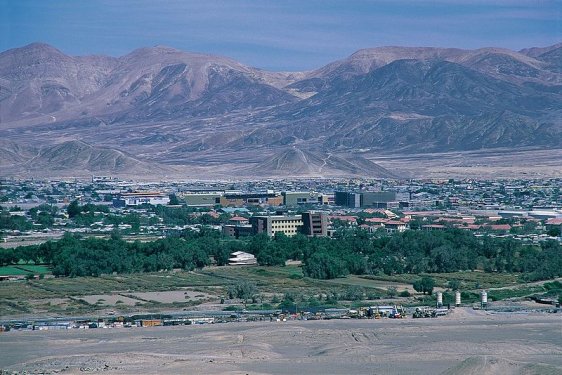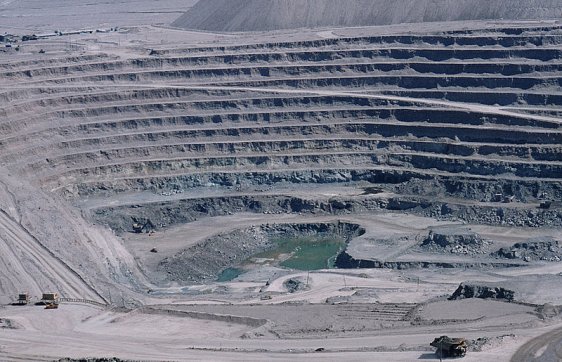Calama is a city in the Atacama Desert in northern Chile. Covering 15,596.9 sq km (6,022 sq mi), it is a very big city in terms of size, but it's population is just around 138,000 (2011 estimate). Located at an elevation of 2,260 m (7,415 ft), Calama is very high and bone dry - it is one of the driest cities in the world.
The Loa river flows through the city from the Andean mountains into the Pacific Ocean, providing sustenence to the otherwise barren city. Warmest months are November to February, when the average high temperature reaches 20°C (68°F). Coldest months are June and June, when the average low drops to 1°C (34°F). The amount of annual rainfall is almost negligible, and may vary one year to the other, as there may not be any rain for the whole year, or just once or twice.
 Calama, Chile
Calama, ChileSource: https://commons.wikimedia.org/wiki/File:Calama_altura.jpg
Author: Cobreloino

Despite the harsh climate, the Calama area has been inhabited for centuries before the arrival of the Spanish. The first Spanish to pass through this area was Diego de Almagro around 1533. Spanish colonization of the area was slow, given the climate. Nevertheless, by the 19th century, the area had come under Bolivian control, until a border conflict lost by Bolivia turned the area over the Chile.
The extraordinary climate surrounding Calama creates some fantastic landscapes which can be visited from the city.
Visiting Calama
Probably the only way to reach Calama right now is to take a bus from Antofagasta. There are many night buses that start late at night and arrive in the early morning. While the city itself is not large, visitors usually come with the intention of exploring the surroundings. Chuquicamata copper mine
Chuquicamata copper mineSource: https://commons.wikimedia.org/wiki/File:Chuquicamata-002.jpg
Author: Reinhard Jahn, Mannheim

Places of Interest in Calama
- Caspana
Mountainous oasis village with rustic houses of the Atacameño people. - Chiu-Chiu
Oasis village of whitewashed adobe house. - Chuquicamata
Biggest open-pit copper mine in the world. - Geisers de Tatio
A land with some 40 geysers and 70 fumaroles, over 4,000 meters above sea level. - Pukará de Lasana
A crumbling heap of stones, this is the ruins of a pre-Inca culture built on a natural promontory.
 Latest updates on Penang Travel Tips
Latest updates on Penang Travel Tips

Copyright © 2003-2025 Timothy Tye. All Rights Reserved.

 Go Back
Go Back